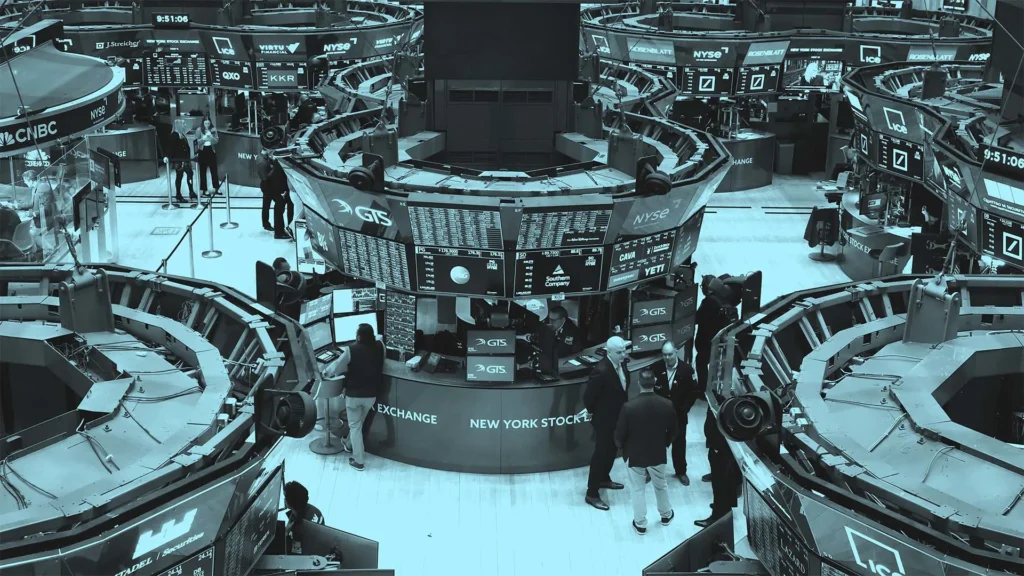Stocks are taking a nosedive on Wall Street, as investors grapple with growing fears of a looming recession. The tech-heavy Nasdaq faced a significant blow, marking its largest decline since 2022. Among U.S. indexes, sharp falls were observed, fueling tension in the market.
Concerns are mounting with ongoing trade tensions and erratic policy moves from Washington. Investors are left weighing the prospect of an economic downturn. As the market session progressed, the sell-off only gained momentum, leaving many to question what lies ahead for the U.S. economy.
Nasdaq Takes a Hit
The Nasdaq, filled with tech giants, faced its worst day since September 2022, dropping a staggering 4.2%. This marks another rough patch after recently dipping more than 10% below its previous record high. Investors are growing cautious, as uncertainty looms over the tech sector’s stability.
This heavy fall not only signals trouble for tech stocks but also highlights broader market concerns. With tariffs and global trade issues causing jitters, the Nasdaq’s performance serves as a bellwether for investor sentiment and economic outlook.
S&P 500 Faces Challenges
The S&P 500 isn’t faring much better, suffering an 8.5% decline from its earlier highs. The index is teetering on its 200-day moving average, a level closely watched by traders as a key support marker. Going below it could spell more trouble.
Sam Stovall, CFRA’s chief investment strategist, suggests this correction is a result of aggressive trade threats, stirring fears of recession. He emphasizes that bull markets succumb to fear rather than age, pointing to recession fears as the main threat.
Tariff Tensions Fuel Instability
Trade wars are causing havoc. President Trump’s tariff announcements and subsequent retractions have sent ripples through the market. His silence on these unpredictable policies adds to investor anxiety.
HSBC’s downgrade on U.S. stocks further illustrates growing recession fears, not just in the U.S., but extending to Canada and Mexico. Economists warn that this uncertainty may push economies towards a downturn.
Economic Indicators Raise Eyebrows
Several economic indicators point to potential trouble ahead. A stronger yen coupled with higher sovereign bond yields are pressures mounting on tech stocks. These developments are linked to speculations around impending interest rate changes in Japan.
The “magnificent 7” AI-related tech giants have been hit, as investors unwind risky carry trades. Such market dynamics highlight the fragile balance keeping tech stocks afloat amid rising global economic pressures.
Government and Corporate Reactions
Political drama isn’t helping. Capitol Hill’s struggle to execute a spending bill to avoid a government shutdown adds another layer of uncertainty. Meanwhile, China’s retaliatory tariffs on U.S. goods take effect.
These political maneuvers are shaking investor confidence. Wall Street closely watches these developments, understanding their potential to trigger a broader economic impact. The complexity of these issues complicates the market’s future outlook.
Amidst all this instability, the CBOE Volatility Index, or the “fear index,” jumped significantly. Hitting 27, it’s at its highest since December 18, a clear indicator of market nervousness.
This index serves as a measure for fear and greed in the market, arguably signaling turbulent times ahead. Volatility in Wall Street often reflects broader economic unease, adding importance to these fluctuations.
Impact on Major Stocks and Indices
The Dow Jones Industrial Average nosedived by nearly 2%, while the S&P 500 and Nasdaq faced even bigger hits, losing 2.75% and 4.18% respectively. Among sectors, technology took the hardest fall, a 4.4% drop.
High-profile stocks like Tesla and Coinbase also saw significant declines. Tesla’s value plummeted 14% amid news of CEO Elon Musk’s controversial actions, while Coinbase dropped nearly 15% tracking Bitcoin’s weakness.
Investor Sentiment and Market Reaction
Investor sentiment remains bearish as declining stocks outnumber advancers significantly. On the NYSE, decliners led advancers by a 3-to-1 ratio. The Nasdaq saw this ratio at 4-to-1, emphasizing the market’s downward trend.
Market observers note that declining issues routinely outpaced rising ones, reflecting a clear lack of confidence among investors, and raising questions about the market’s ability to recover quickly.
What Lies Ahead for Wall Street?
The path forward looks uncertain. With geopolitical tensions, economic policies, and investor sentiments all at play, Wall Street braces for further challenges. Current trends indicate a bumpy road, with rapid shifts in market confidence likely.
Many analysts predict the road to recovery may be long and arduous. As global economies face parallel challenges, the interconnectedness of markets will be crucial in navigating this turbulence.
Conclusion: Navigating the Uncertainty
As Wall Street wrestles with recession fears, the journey ahead is unpredictable. Investors are left weighing risks against future opportunities. With market dynamics shifting rapidly, maintaining a cautious outlook seems prudent.
In this volatile climate, it becomes imperative to understand broader economic contexts and anticipate the potential impacts on investments. Only time will tell how Wall Street will navigate through these stormy waters.
The financial world holds its breath as Wall Street faces uncertain times. Market dynamics point to a rocky journey ahead, with investors bracing for more volatility. As economic indicators fluctuate and geopolitical factors add pressure, the path forward remains unpredictable. Cautious navigation and strategic planning may be key to weathering the storm.





